Dragon Age: The Veilguard Review – A New Chapter in Thedas
Platform: PC (also available on PS5, Xbox Series X/S)
Developer: BioWare
Publisher: Electronic Arts
Release Date: October 31, 2024
For fans of BioWare’s acclaimed Dragon Age series, the wait has been long and full of anticipation. After nearly a decade, Dragon Age: The Veilguard finally delivers a journey back into Thedas that promises lore-rich storytelling, emotionally driven choices, and a new level of combat dynamism. Having spent over 100 hours across multiple playthroughs, including a range of character builds and story decisions, I’ve found myself both challenged and enchanted by this fresh installment. This is a return to form for BioWare, giving players the adventure they’ve longed for, while pushing the boundaries of what Dragon Age can be. Simultaneously, there is some shockingly poor dialogue and banter between characters that detract from the overall experience.
An Immersive World, Ten Years in the Making
Set a decade after Dragon Age: Inquisition, The Veilguard invites players to step into the shoes of Rook, a fresh yet unseasoned protagonist, tasked with confronting not only Solas—the Dread Wolf—but two newly freed elven gods threatening Thedas. The stakes are immense, and from the breathtaking descent through Tevinter’s rain-soaked streets in the opening act, it’s clear that The Veilguard will stop at nothing to awe its players. The Dread Wolf becoming a villain could have been more prominent, without spoilers, the other two Gods are more of the focus which was a disappointment. BioWare has crafted a world that feels as alive as it is dangerous, and each area—from Blight-infested landscapes to iridescent elven forests—is rendered in striking detail. The visuals and performance are very well polished, we also played this on a ROG ALLY X and it was perfect at a steady 60fps even on battery.
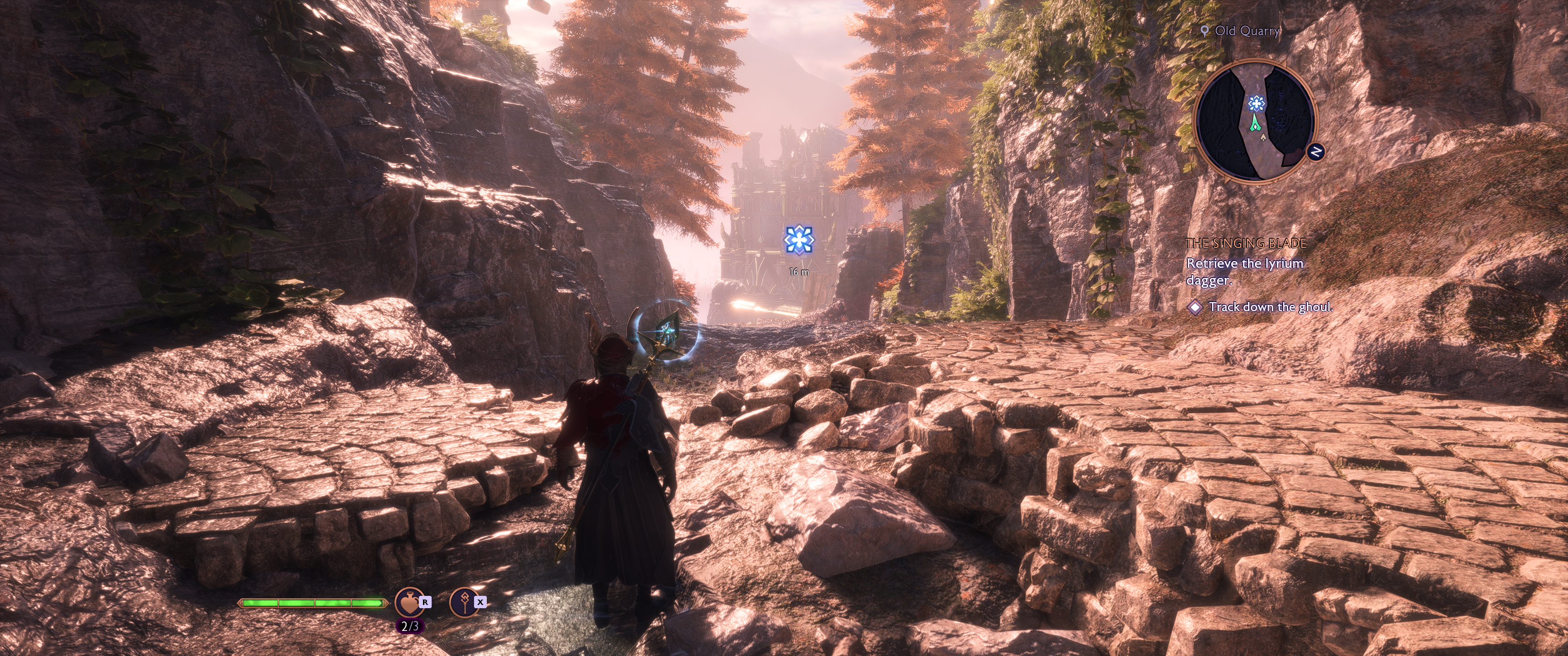
The environments also reflect BioWare’s new stylized visual approach. Vibrant lighting accentuates every scene, lending it a cinematic quality, while the mix of smooth textures and exaggerated features breathes life into the game’s fantastical locales and character expressions. This approach makes the world of Thedas feel both nostalgic and refreshing, and the detailed zones expand the game’s depth while still feeling accessible and rewarding. Our Nvidia RTX 4080 paired well here with striking visuals and incredible Ray Tracing and fast performance with DLSS and Frame generation.
Storytelling and Choices – Dragon Age at Its Best
At the heart of Dragon Age lies its complex storytelling, where every choice can affect relationships, alliances, and the broader fate of Thedas. The Veilguard elevates this tradition, weaving a narrative that balances epic, world-saving stakes with intimate character moments. With every companion mission, outing, and decision, the game adapts, drawing the player into a branching narrative that emphasizes consequence. Small interactions—like choosing whom to bring on missions or which factions to assist—compound over time, altering dialogue, outcomes, and even some of the available choices as events unfold.
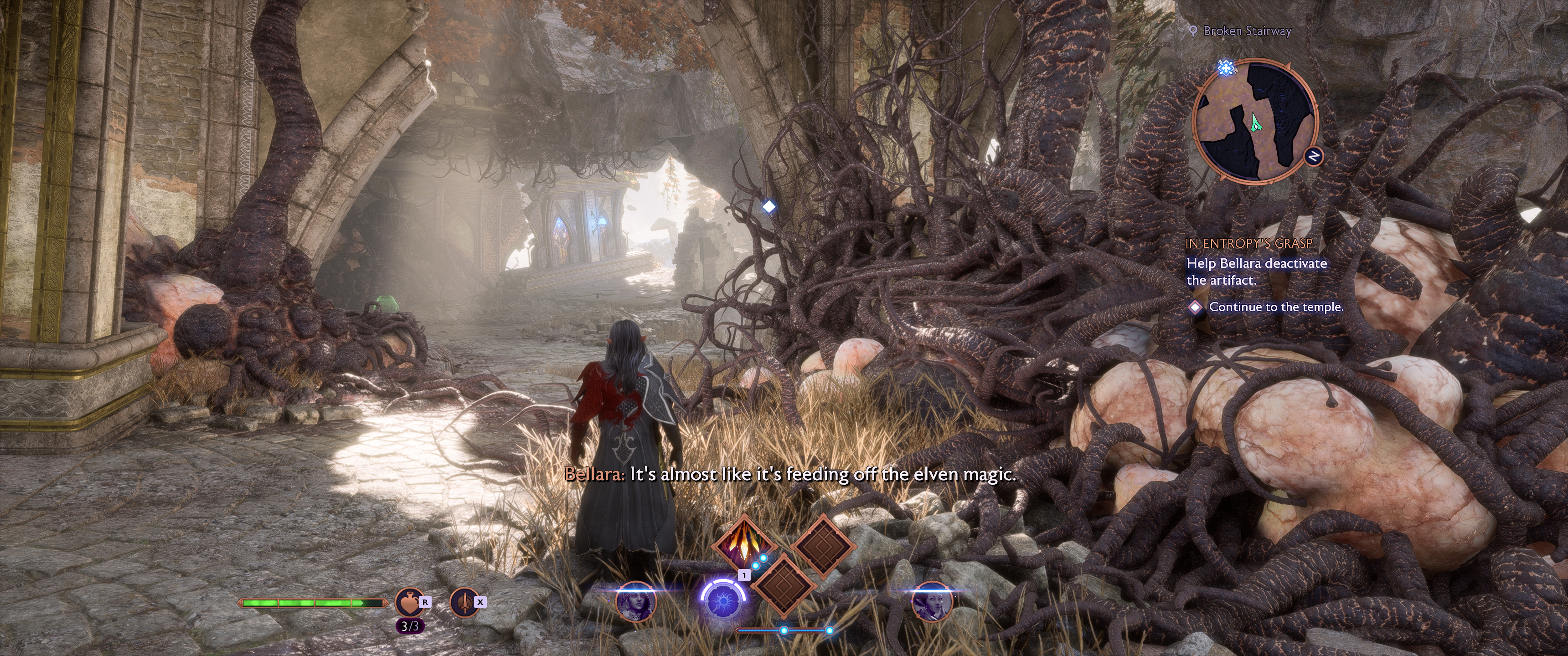
Character Creation and Evolution
The Veilguard introduces one of the series’ best character creators, making it easy to shape and personalize Rook, the leader of the team and who you control. The character creator is divided into five categories: Lineage, Appearance, Class, Faction and Playstyle and is very diverse. Regardless of the controversial inclusion of some settings, its great to able to make the character your own – and one that actually speaks. Customization extends beyond aesthetics; choices about class and abilities allow players to develop a unique play style. Players even have access to the Mirror of Transformation after the prologue, making it easy to fine-tune their character’s appearance as the game progresses—a thoughtful addition that enhances immersion. You get to also choose your background and origin that does shape conversation and some dialogue choices.
A Cast of Compelling Companions
The Veilguard’s companions are richly developed, each with distinct motivations, strengths, and character arcs that unfold through the player’s choices. The game utilizes a three-tiered approach to developing these relationships: Conversations, Outings, and Quests. While Conversations provide insight into each character’s backstory, Outings allow players to engage in personal missions, and Quests culminate in decisive moments that define each companion’s story arc. This careful design allows companions to feel like integral parts of the game world, rather than static sidekicks.
However, one of the biggest downfalls of the Veilguard is just how safe it plays with conflict and dialogue. The dialogue is quite poor in many scenes and often feels patronizing to the gamer. Banter is poorly written and cringe-worthy at times and can detract from an otherwise interesting and fantastical setting. I still really enjoyed the story overall but inevitably there will be the crowd that sees compilations of some of the writing in comparison to previous Dragon Age games and feels its major step down.
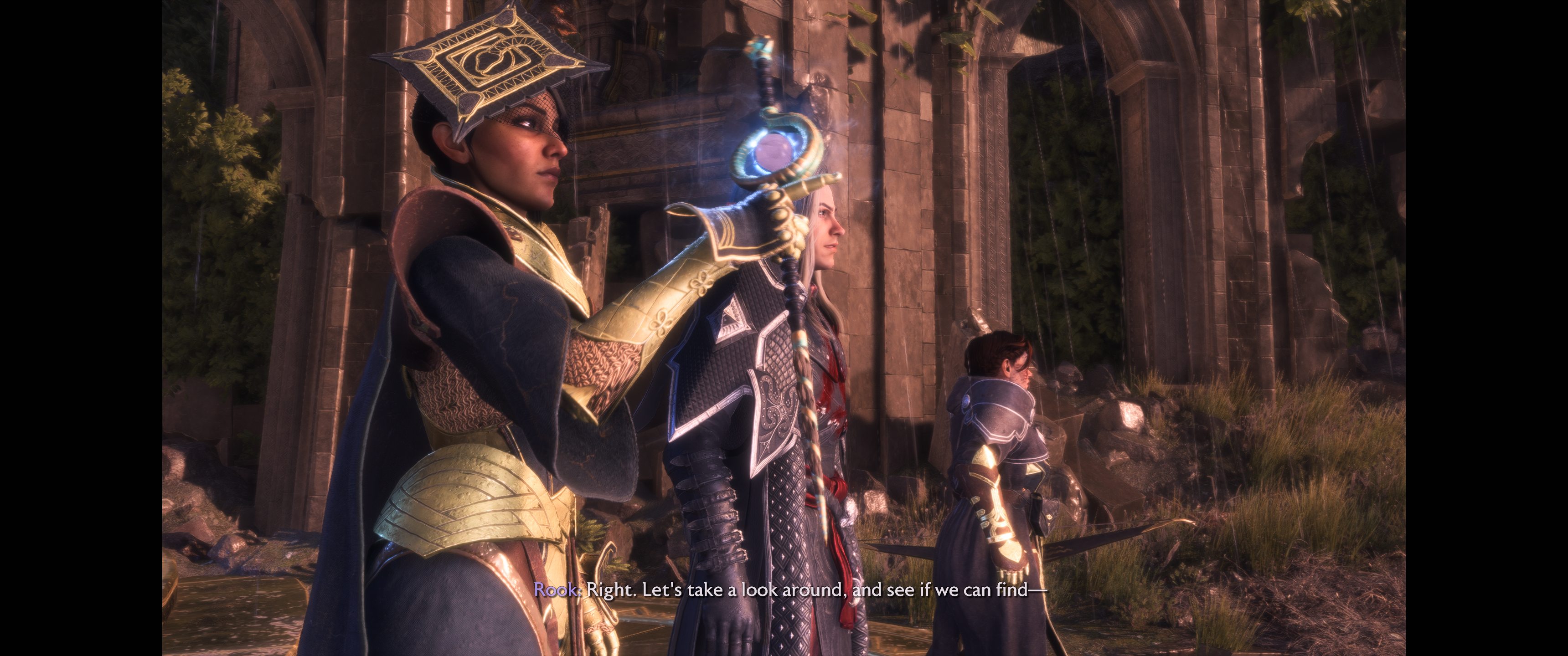
An Emotional and Diverse Team
I really enjoyed my journey with this team, from the enigmatic Taash to the witty Harding, each companion brings something unique to the group dynamic, making each journey feel personal and layered. A particular standout is Emmrich, whose storyline surprised and intrigued me with its depth and unpredictability. Additionally, while some past Dragon Age characters evoked mixed feelings in the fandom, The Veilguard’s companions are harder to dislike, though this can feel a bit “safe” as mentioned before. Character design is softer in comparison to previous titles as well. Players won’t be making enemies within their own team, which, while harmonious, occasionally sacrifices the drama found in earlier installments. There is often nothing and even dialogue choices where I wanted to be angry or “be offensive” to another character where filtered.
I am reminded of my experiences with Mass Effect and how a couple of dialogue choices could create massive tension within your team or even lead to someone’s life being in peril. There is hardly any of this experience here, which is quite shocking for a Bioware title where they have been known to create those specific enthralling choices that impact your game.
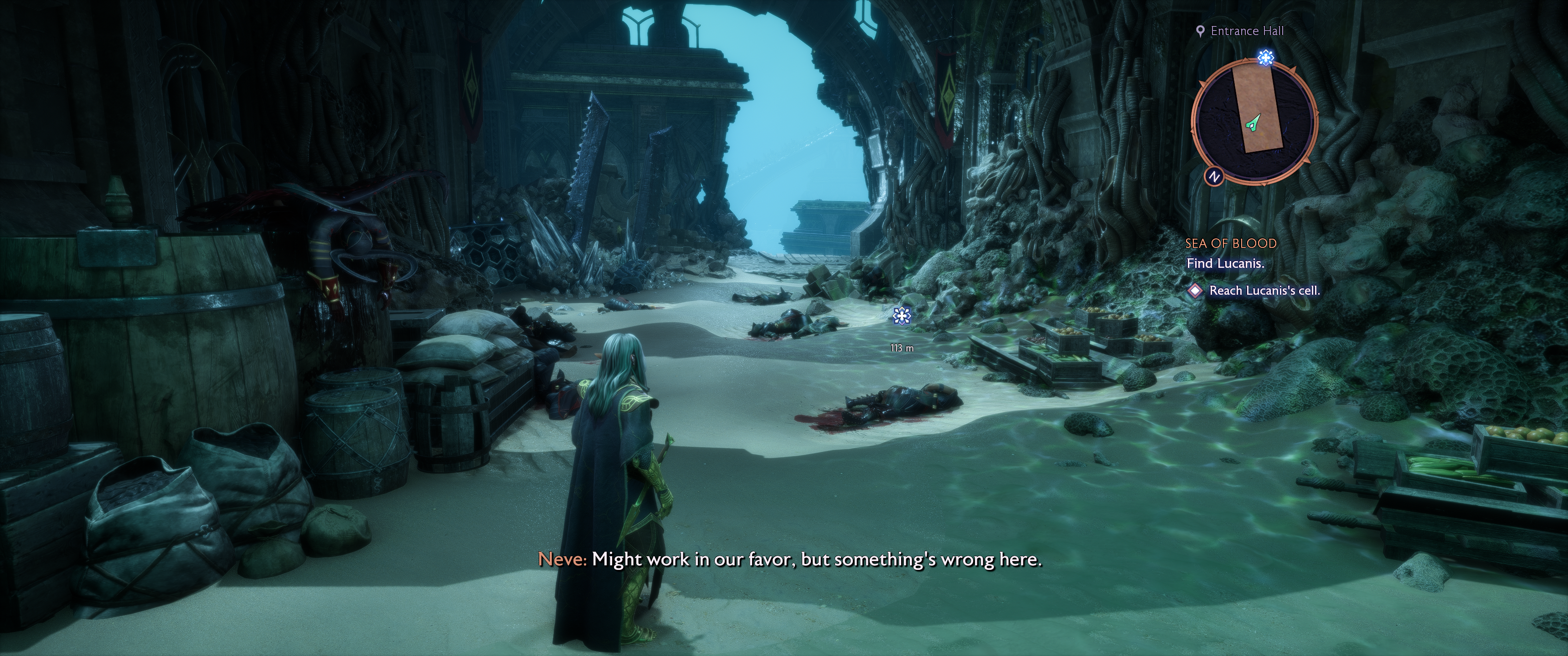
Romance remains a highlight, with options that cater to different play styles and preferences. Each romance unfolds at its own pace, whether it’s a slow-burning connection or a passionate exchange. In every interaction, it’s clear that BioWare has taken care to make each companion feel not only authentic but endearing. One detraction that has been echoed with others I have seen is that once you make the final choice to “cement” the romance with one character there is no acknowledgement of it from the others you may have been flirting with.
A Revamped Combat System That’s Finally Worth Playing For
Combat in Dragon Age has often been a point of contention. However, The Veilguard redefines the series’ approach to action, combining fluid combat mechanics with deep character builds. It’s the first Dragon Age where combat alone could sustain players’ interest, boasting a depth reminiscent of From Software’s Souls games. The revamped system includes options for light and heavy attacks, dodges, blocks, and skill combinations that allow players to strategize with satisfying precision. Team power combos and skill trees keep it exciting and the different class types are fun to play, with my favorite being the mage.
Build Customization and Tactics
Each class—whether a Rogue, Mage, or Warrior—can be customized to a degree never seen before in the series. I built my custom created Mage as an electrifying Spellblade, swapping between elements to maximize my combat effectiveness and using powerful spell combos with my team, while my Elven Warrior used Perfect Defense to dominate melee battles. The Rogue is also extremely fun with dual blades and there is something for nearly every player to enjoy.
Ultimately, I had the most fun as I do in most games with a mage build swapping between fire and electric attacks and picking enemies off from a distance. The Veilguard’s build-crafting encourages experimentation, giving players numerous ways to optimize gear, skills, and companions to suit their style and enemy types.
World-Building and Faction Dynamics
The game’s faction system gives players the ability to influence groups across Northern Thedas. Building relationships with factions like the Antivan Crows or Grey Wardens adds a layer of strategy and consequence, with choices affecting the Allied Strength rating that impacts the game’s climactic third act. Raising faction strength opens up further mission opportunities and supplies better gear, tying every interaction back to the world’s overall progression.
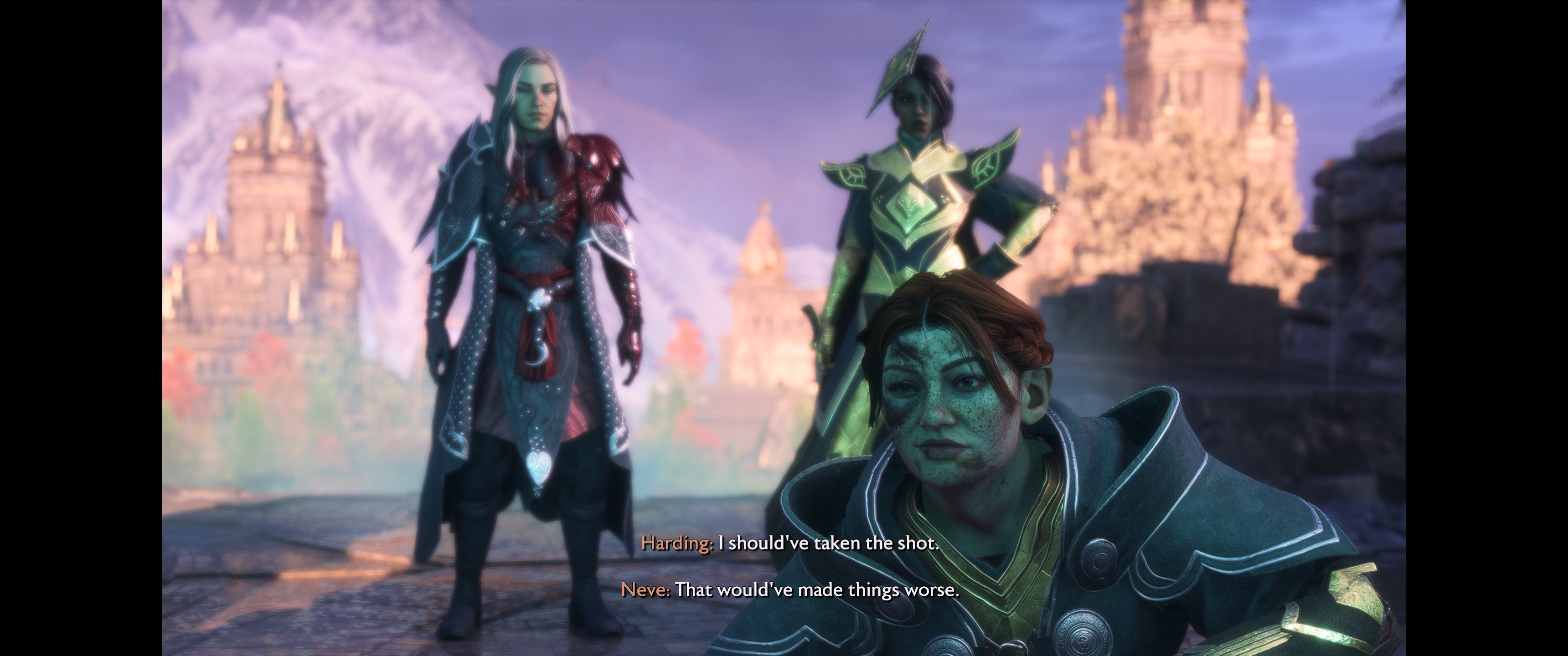
An Ending That Delivers
By the time I reached the final mission of The Veilguard, I was left in awe. The ending serves as a perfect payoff for the choices, bonds, and alliances built throughout the game. It’s a breathtaking experience that feels like a fitting tribute to long-time fans and a high point in BioWare’s storytelling. Each faction, companion, and player decision culminates in a conclusion that is both epic and deeply personal—a testament to BioWare’s dedication to its characters and the world of Thedas. Even if there was some poor banter and an extreme lack of strong choices in dialogue – I still had a great time.
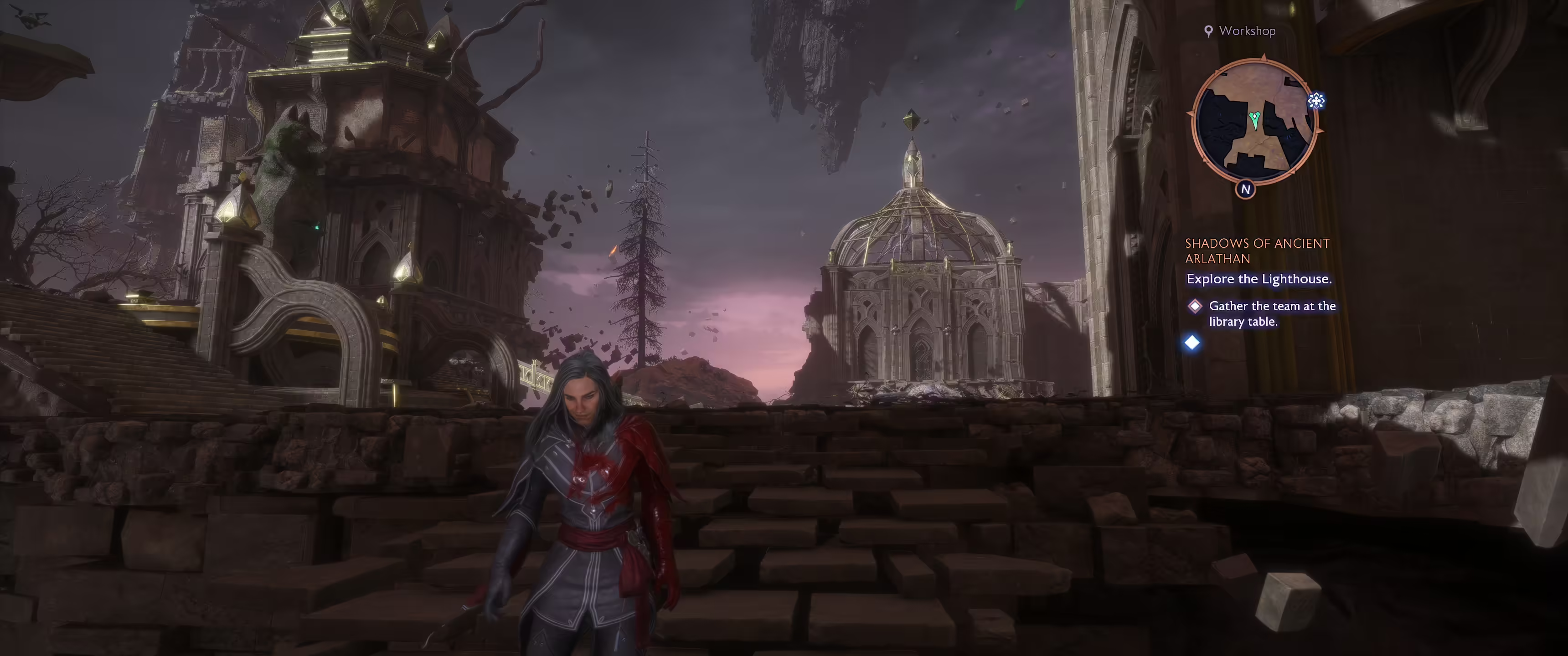
Verdict: BioWare’s Triumphant Return to Thedas
Dragon Age: The Veilguard sets a new standard for BioWare’s RPGs, delivering an experience that’s visually captivating, emotionally compelling, and mechanically engaging. It preserves everything that fans love about Dragon Age—the rich lore, complex relationships, and moral ambiguity—while offering fresh gameplay and improved systems that make Thedas feel more vibrant and alive than ever. There are very valid criticisms of its safe approach that we can agree with and this will disappoint many who expect a more gritty and real experience. Still, It’s a must-play for long-time fans and newcomers alike, solidifying The Veilguard as a great point in the Dragon Age saga.
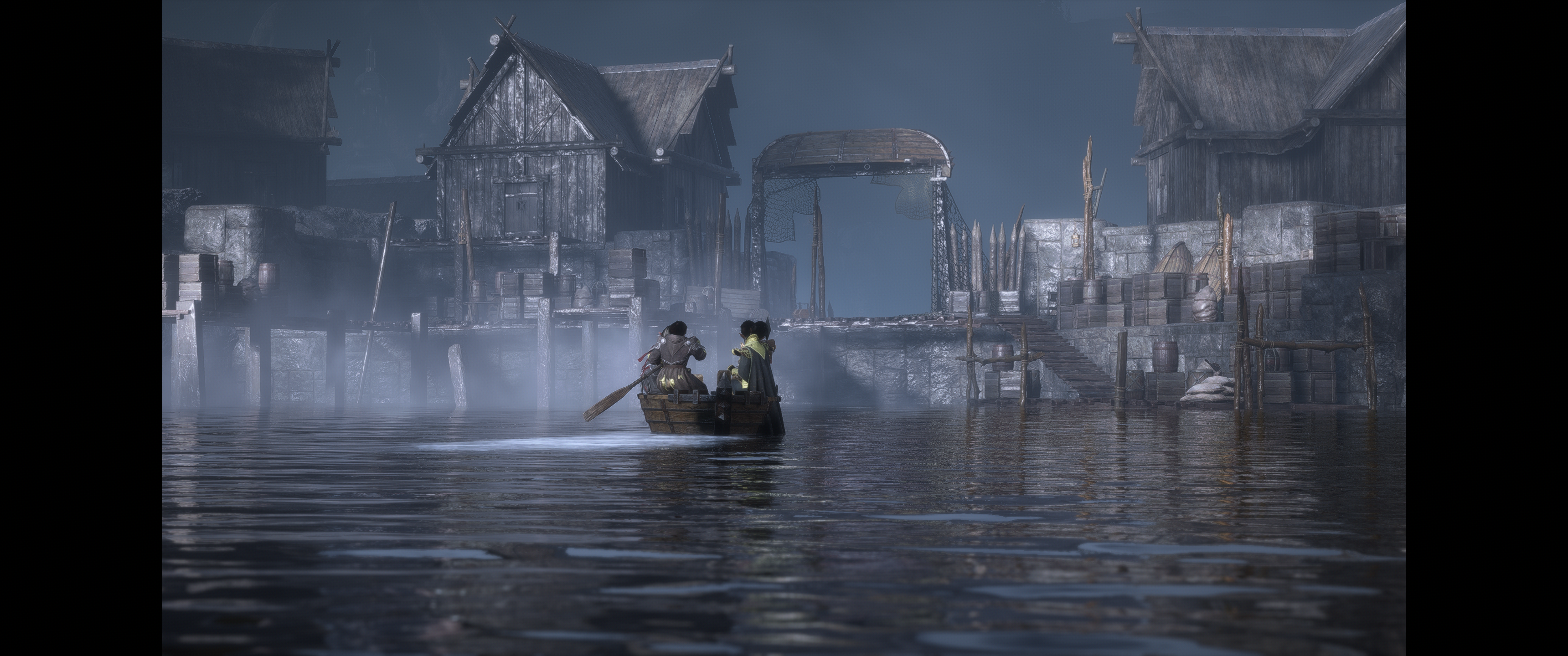
Score: 8.5/10
Pros:
- Engrossing story and well-developed lore
- Dynamic companion relationships and romance options
- Deep, rewarding combat system with extensive build customization
- Beautifully crafted visuals and environments
Cons:
- Companion dynamics feel a bit safe compared to past games
- Some pacing inconsistencies in the middle acts
- Poor banter and character dialogue choices
Dragon Age: The Veilguard: Dragon Age: The Veilguard sets a new standard for BioWare’s RPGs, delivering an experience that’s visually captivating, emotionally compelling, and mechanically engaging. – Mario Vasquez
| Rating | Game title | Review published |
|---|---|---|
| 10/10 | Starfield | August 31, 2023 |
| 9/10 | Mortal Sin | September 11, 2025 |
| 9/10 | Rift of the NecroDancer | June 7, 2025 |
| 9/10 | Black Myth: Wukong | August 26, 2024 |
| 9/10 | Hogwarts Legacy | February 18, 2023 |
| 8.5/10 | Megabonk | October 9, 2025 |
| 8.5/10 | Back to the Dawn | August 16, 2025 |
| 8.5/10 | Wuchang: Fallen Feathers | July 22, 2025 |
| 8.5/10 | SCUM 1.0 | June 19, 2025 |
| 8.5/10 | Dragon Age: The Veilguard | November 8, 2024 |
| 8.5/10 | Review: Five Nights at Freddy's: Into the Pit | October 6, 2024 |
| 8/10 | Luto | August 9, 2025 |
| 8/10 | REMATCH | July 5, 2025 |
| 8/10 | Stellar Blade | June 21, 2025 |
| 8/10 | DOOM: The Dark Ages | June 4, 2025 |
| 8/10 | S.T.A.L.K.E.R.: Legends of the Zone Trilogy – Enhanced Edition | May 24, 2025 |
| 8/10 | Blades of Fire (PS5 Version) | May 23, 2025 |
| 8/10 | Jötunnslayer: Hordes of Hel | May 14, 2025 |
| 7.5/10 | Moros Protocol | October 12, 2025 |
| 7.5/10 | Whimside | September 12, 2025 |
| 7.5/10 | Deep Sleep: Labyrinth | September 12, 2025 |
| 7.5/10 | Dune: Awakening | June 10, 2025 |
| 7.5/10 | Starship Troopers: Continuum | May 14, 2025 |
| 7.5/10 | Anyaroth: The Queen’s Tyranny | December 11, 2024 |
| 7.5/10 | S.T.A.L.K.E.R. 2 | November 30, 2024 |
| 7.5/10 | Camp Sunshine | November 18, 2024 |
| 7.5/10 | Artifice: War Tactics | September 9, 2024 |
| 7/10 | Fatherhood | September 27, 2025 |
| 7/10 | Flick Shot Rogues | September 19, 2025 |
| 7/10 | JDM: Japanese Drift Master | June 7, 2025 |
| 7/10 | Undivine | June 3, 2025 |
| 7/10 | Flowstone Saga | November 5, 2024 |
| 7/10 | Terminus: Zombie Survivors | October 6, 2024 |
| 7/10 | Skelethrone: The Chronicles of Ericona | September 22, 2024 |
| 6.5/10 | Dyer Expedition | October 9, 2025 |
| 6.5/10 | Plan B: Terraform | September 26, 2025 |
| 6.5/10 | King’s Blade | September 24, 2025 |
| 6.5/10 | Beat ’Em Up Collection (QUByte Classics) | August 30, 2025 |
| 6.5/10 | The Precinct | May 13, 2025 |
| 6.5/10 | Driving Is Hard | May 12, 2025 |
| 6.5/10 | Simulakros | December 8, 2024 |
| 6.5/10 | Star Wars: Outlaws | September 7, 2024 |
| 6.5/10 | Atomic Heart | February 20, 2023 |
| 6/10 | Rise of Industry 2 | September 27, 2025 |
| 6/10 | Quarantine Zone: The Last Check | June 6, 2025 |
| 5/10 | Frog Legs | May 23, 2025 |
| 5/10 | Redfall | May 1, 2023 |
| 2/10 | Game Review: Panic Pump – Can You Save Them All? | September 15, 2024 |